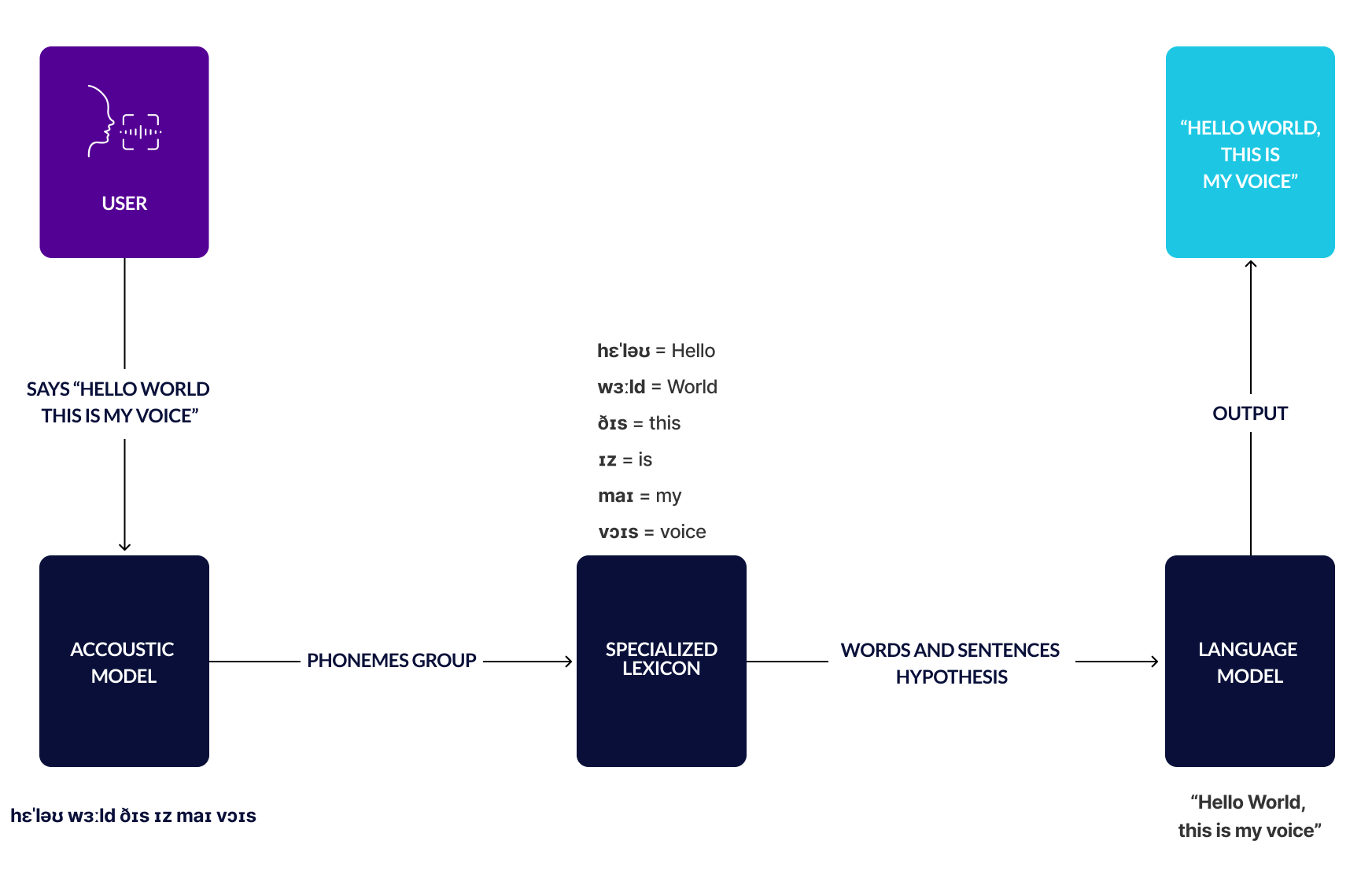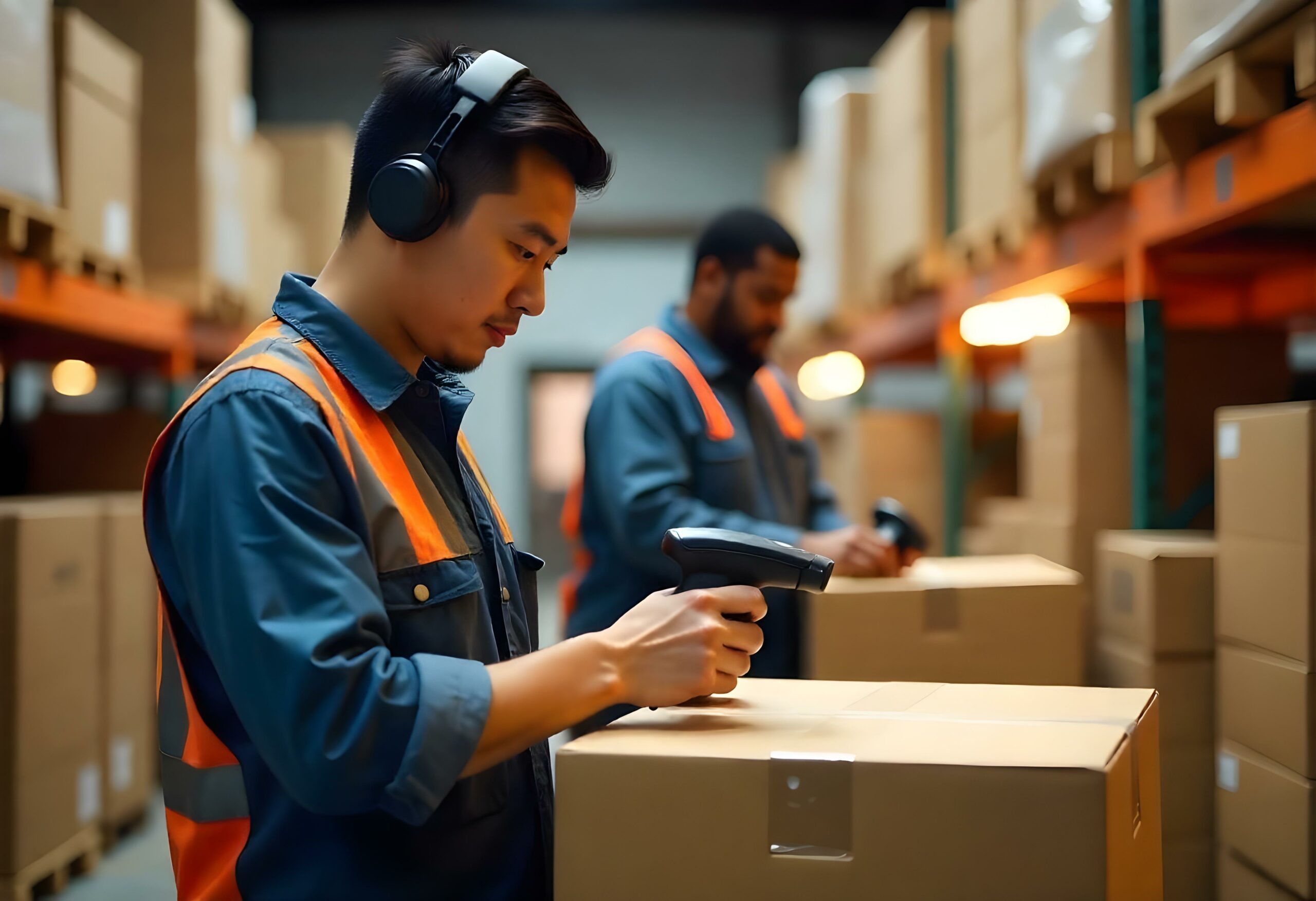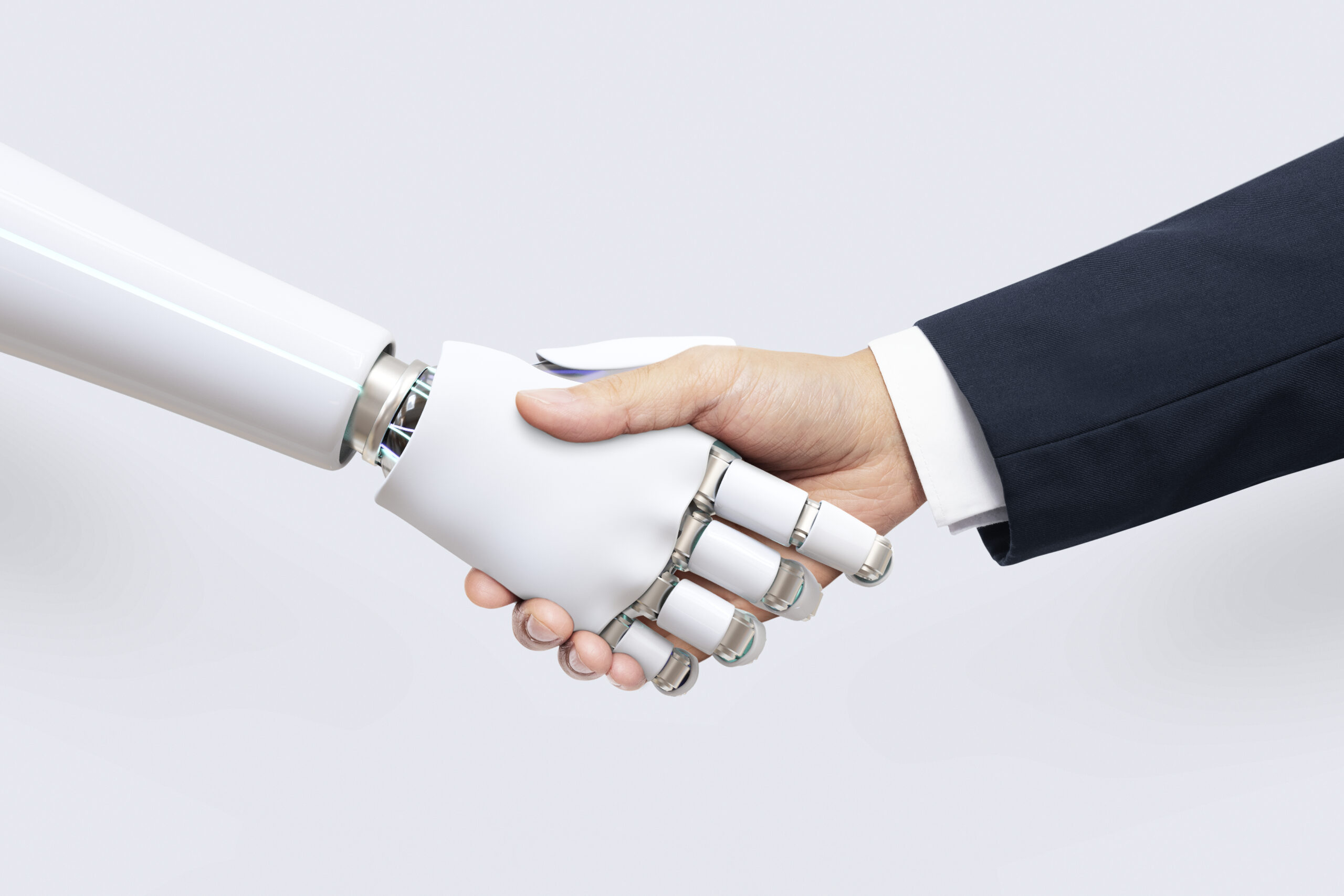Artificial Intelligence, and Voice AI in particular, have such an impact on industries, establishing itself as a powerful tool that sets businesses apart. In a very short time, voice-powered software has transformed the way companies operate, reshaping traditional processes and introducing levels of efficiency and precision once thought impossible. This is especially true in sectors like logistics and supply chain management, where even minor improvements in accuracy or speed can create a significant ripple effect across the entire operation. As companies navigate the complexities of today’s global market, the need for seamless, hands-free solutions has become clear. Voice AI meets this need by allowing workers to engage with systems via simple voice commands, which enhances both speed and safety on the warehouse floor. With Voice AI, supply chain processes are reimagined—streamlined and simplified to keep up with the fast pace of modern logistics.
What’s Voice AI?
Voice AI is a subgenre of conversational AI using Artificial Intelligence to process the interpretation and generate a response to spoken commands. This technology leverages automatic speech recognition (ASR), natural language processing (NLP) and machine learning to understand context and continuously improve performance in terms of responsibility and human comprehension.

This results in a system that becomes increasingly accurate and responsive over time, aligning closely with the needs and habits of its users.
The technical backbone of Voice AI involves ASR to convert spoken words into digital text, which the system then processes with NLP to understand intent. It enables Voice AI to interpret complex and multi-step commands, making it particularly effective in dynamic environments where tasks are diverse and demand quick responses.
How does it work?
Speech recognition, as the name suggests, is the task of converting spoken words from audio inputs into digital text outputs. Even though the field is currently dominated by the so-called end-to-end systems, which aim to convert speech directly into text with no intermediate subsystems, ASR has historically been split into three main, sequential building blocks that work jointly to refine the speech into understandable text: acoustic model, lexicon, and language model.
For the sake of simplicity, acoustic model can be initially defined as a block that converts a speech signal into smaller, discrete units, such as phonetic tokens; lexicon as a mapping between those phonemes and written words; and language model as a block that takes word-context into consideration, so the final sequence of words is meaningful and makes more sense. Together, these blocks provide an accurate and contextually appropriate interpretation of spoken language to the customer at the output of the system as a whole.
ASR operating stages

Acoustic Model
The Acoustic Model processes the audio signal to identify smaller units that correlate with spoken sounds. It converts sound waves into a sequence of tokens, creating a foundational layer for understanding the spoken input. Later on, subsequent models are responsible for converting such tokens back to written text.
Technology-wise, the acoustic model has evolved a lot in the last couple of years. While Gaussian Mixtures and Hidden Markov Models dominated the field in the recent past, Deep Neural Networks (DNN) play the major role in what concerns the backbone of speech recognition models nowadays. Within the DNN field for ASR, architectures have also evolved quite a lot, from convolutional and recurrent networks to the widely spread used Transformers.
Specialized Lexicon
This lexicon refines the token-to-word mapping, forming a hypothesis for possible words and sentence structures. It narrows down potential word matches to make sense of the audio input.
Phonemes have been traditionally used as the main modeling tokens in ASR, and in spite of the current mainstream use of character-based tokens such as byte pair encodings, phonemes are still quite useful for short vocabulary tasks such as command and control due to the ease of manipulation of the pronunciation rules.
Language Model
The Language Model uses grammar and probability-based rules to ensure the words form a coherent sentence. By understanding the context, it selects the most likely word sequence, turning the phrase into a grammatically correct output.
Language models can be estimated from data with standard approaches like n-grams or even with recurrent DNNs or Transformers. For short vocabulary tasks, on the other hand, manually writing grammars can be beneficial in order to restrict the number of false positives and senseless combinations of words in the final output sentence, apart from the lightweight aspect during the execution of the system.
What Voice AI brings to the table
Accessibility and adaptability of Voice AI in various supply chain use cases
One of the most remarkable advancements in Voice AI technology is its versatility and accessibility, which have reshaped supply chain management and simplified operations across an array of functions.

Today, voice-enabled and generative AI software can be integrated seamlessly into any system for tasks ranging from inventory management and order picking to real-time tracking and quality control. This adaptability allows Voice AI to become an essential tool within warehouses, distribution centers, and even field operations, supporting various functions with ease.
Voice AI’s flexibility lies in its ability to be tailored to meet the unique needs of each organization. Whether it’s seamlessly integrating with a company’s existing warehouse management systems (WMS) or adapting to specific environments such as cold storage or high-density fulfillment centers, Voice AI can be customized to work with existing infrastructures and requirements. Generative AI further enhances this adaptability by enabling the creation of tailored responses and solutions, making it accessible for organizations of all sizes, from small businesses to large enterprises. Actors in the Voice AI development space, like Vivoka, offer integration-ready solutions that can be quickly deployed across various platforms, demonstrating the compatibility of Voice AI with diverse technological ecosystems.
Beyond integration, voice-powered and generative AI devices enable companies to delegate secondary or repetitive tasks to machines, such as confirming inventory levels, handling order status requests, and providing directional assistance within a facility. This delegation not only boosts productivity but also enhances worker satisfaction by reducing physical strain and allowing them to focus on higher-value tasks. Voice AI, powered by generative capabilities, acts as an assistant for workers, interpreting commands, delivering precise responses, and assisting in data entry tasks in real-time. By doing so, it elevates human-machine interaction to a more cooperative level, making workers’ roles more streamlined and enhancing their capacity to manage complex workflows.
In applications like real-time inventory checks, Voice AI provides a hands-free, generative solution that enables workers to quickly verify stock levels, request product locations, or track shipments. This hands-free, voice-controlled access to data significantly reduces the physical effort and time required, which is especially advantageous in high-traffic environments or during peak seasons.
Additionally, Voice AI systems are often equipped with noise-canceling features, ensuring commands are accurately processed even in noisy warehouse environments. This feature enhances both the accuracy and reliability of the technology, making it a valuable asset in dynamic settings.

Moreover, voice commands support field operations in logistics, allowing drivers or field service workers to request updates, log data, or receive task instructions without stopping or handling a device manually. This enhances safety and efficiency, as workers can keep their hands and eyes focused on the primary task. For companies, this translates to fewer workflow interruptions, faster task completion, and improved compliance with safety protocols.
Voice AI’s adaptability also includes multilingual and generative support, making it a suitable tool for companies with diverse workforces. This ensures that workers who may not be fluent in the main language of the workplace can still use the technology effectively, reducing communication barriers and enhancing inclusivity.
The applications of Voice AI, enriched by generative capabilities, continue to expand as companies harness its potential to align with unique workflows and operational objectives. By adopting Voice AI, companies not only optimize their processes but also set a foundation for future adaptability, making the technology an integral part of their evolving supply chain strategies.
Reduction of human errors
Reducing human errors is one of the most impactful benefits of Voice AI, particularly in the supply chain, where even small mistakes can create substantial disruptions. Errors in inventory counts, order picking, or shipment tracking can quickly snowball, leading to costly delays, misallocations of resources, and dissatisfied customers. In the high-stakes world of the logistics industry, precision represents a lot, and even minor inaccuracies can ripple across the entire operation, negatively affecting productivity, profitability, and customer relationships.
Voice AI addresses these challenges by creating a direct, hands-free line of communication between employees and the systems they use. By allowing workers to issue commands and receive prompts verbally, Voice AI eliminates the need for manual data entry, which is often a source of errors due to fatigue, multitasking, or environmental distractions. Instead, employees can perform tasks by speaking naturally, letting the technology capture and confirm data in real time, ensuring that information flows accurately through each step of the supply chain.

Moreover, Voice AI can validate commands and flag inconsistencies immediately, acting as an additional layer of quality control. For example, if a worker misidentifies an item or provides an incorrect count, the system can prompt them to double-check or re-scan, helping to catch errors before they escalate. This proactive feedback reduces the likelihood of mistakes being passed along, reinforcing accuracy from the start. In addition, by reducing the cognitive load on employees, Voice AI allows them to work more efficiently and with greater focus.
Without the distraction of manual inputs, workers can concentrate on high-priority tasks, knowing that the system will guide them, catch potential errors, and ensure smooth, accurate operation throughout the supply chain.
Real-time data and enhanced devision-making
Voice solutions, particularly Vivoka’s, offer the advantage of real-time data capture, empowering companies to make decisions based on the most current information. With voice commands, employees can input data instantly as they move through tasks, providing managers with up-to-the-minute insights. This immediacy not only supports more agile and accurate decision-making but also enables quick responses to changing conditions or unexpected issues within the supply chain.
The instant availability of data is a game-changer in logistics, where every minute matters. Real-time voice data allows managers to adapt to fluctuations in demand, inventory levels, and operational needs without delay. For instance, if there’s a sudden increase in orders or a supply shortage, managers can adjust workflows and reallocate resources immediately to improve processes and reduce downtime.
Additionally, Vivoka’s voice solutions enhance visibility across various touchpoints, offering a seamless flow of information from the warehouse floor to upper management. This transparency enables decision-makers to anticipate bottlenecks, prevent potential issues, and ensure smooth operations, ultimately improving both responsiveness and reliability throughout the supply chain.
Safety and efficiency growth
The advent of voice commands has significantly enhanced both safety and efficiency in the supply chain environment. Previously, employees were required to juggle multiple tasks simultaneously, often switching between handling products and inputting data manually, which led to increased pressure and physical strain. With voice solutions like those provided by Vivoka, workers can now focus their hands and eyes on the task at hand—whether lifting, carrying, or moving products—while managing other tasks through simple voice commands.
This shift is particularly beneficial in busy environments like warehouses, where freedom of movement is essential. By allowing employees to keep their hands free, voice technology minimizes the distractions and disruptions that come from multitasking. This not only reduces the risk of accidents by helping employees maintain concentration, but it also fosters a safer workspace where workers are less prone to fatigue and errors.
The improvement in safety directly impacts efficiency as well. As previously mentioned, workers who experience less physical strain and mental fatigue are better equipped to maintain their productivity throughout the day. The seamless interaction provided by voice commands allows tasks to flow smoothly, ensuring that employees can operate more effectively while staying safe, ultimately contributing to a more efficient and resilient supply chain.
It also represents a significant improvement for drivers, who no longer need to stop to physically interact with their on-board hardware in the truck cab, which allows them to stay focused on the road while accessing crucial information through voice commands. Voice AI seamlessly integrates Transportation Management Systems (TMS), to ensure that drivers can receive real-time updates by voice, when driving, without compromising their safety or efficiency.
Enhanced productivity through task automation with Vivoka Voice AI
The integration of voice technologies in logistics and supply chain operations has led to a significant productivity boost, with a 35% increase observed when applied in these environments (based on our customers’ figures). Vivoka’s voice-powered systems are highly transforming productivity in the supply chain industry by automating routine processes and providing real-time support to employees. In fast-paced logistics and warehouse environments, every second counts, and voice AI systems allow workers to complete tasks more efficiently, freeing them from manual data entry or device handling. With those solutions, employees can work hands-free, focusing on essential, higher-value tasks, which translates to increased productivity across the board.
A standout feature of Vivoka’s Voice AI technology is its ability to streamline complex, repetitive tasks. For instance, employees can log completed orders, confirm item locations, or initiate restocking processes with simple voice commands, eliminating the need for physical interaction with screens or keyboards.

Voice-based systems also enhance real-time support, tools that offer on-the-spot guidance that boosts both accuracy and efficiency. Workers receive instant feedback through voice prompts—whether it’s a notification about missing items in an order or reminders of nearby products for the next task. This real-time responsiveness, enabled by Vivoka, allows employees to work faster and with greater confidence, reducing the likelihood of errors and the need for repetitive actions.
By integrating Vivoka’s Voice AI, companies can maintain peak efficiency even during high-demand periods, empowering their teams to achieve greater output without compromising quality. This level of task automation not only contributes to productivity but also enhances job satisfaction, as employees can perform their roles more effectively and feel supported by intelligent, voice-driven systems. Vivoka’s technology becomes a true ally in boosting operational excellence, making it a critical tool in the future of supply chain management.
The future potential of Voice AI in the Supply Chain

The future of Voice AI in supply chains is set to revolutionize automation, efficiency, and integration. This scalable technology will evolve to meet the expanding demands of the industry, adapting to handle increased workloads, multilingual support, and more complex tasks.
By automating functions like inventory management, predictive maintenance, and order processing, Voice AI will allow workers to focus on higher-value activities, creating smoother and faster operations across the supply chain. Its flexibility and advanced capabilities make it a sustainable investment for businesses aiming to stay competitive and agile in an ever-changing landscape.
As Voice AI technology advances, we can expect it to integrate seamlessly with IoT devices, giving companies real-time visibility into everything from inventory levels to equipment health. This integration will enable Voice AI systems to deliver instant feedback to workers, alerting them to changes in inventory status, environmental conditions, or machinery performance. For instance, a voice command could immediately retrieve data from IoT sensors, notifying workers of potential issues and helping to reduce unplanned downtime.
Predictive capabilities will also improve, empowering supply chains to anticipate and address needs proactively. Using advanced machine learning, Voice AI will identify bottlenecks, and optimize resource allocation, helping managers make informed, proactive decisions. Voice AI’s integration with predictive maintenance will be transformative as well. It will provide workers with real-time insights on equipment performance, allowing them to schedule maintenance before issues arise, thus enhancing operational reliability.
With improvements in language processing, Voice AI will become more accessible to diverse workforces by supporting multiple languages and dialects. Enhanced noise-canceling algorithms will allow Voice AI to function accurately even in noisy warehouse settings, while voice biometrics will add a layer of security, ensuring that only authorized users can access sensitive information.

Voice AI will also offer valuable data analytics, helping managers track productivity metrics and identify areas for improvement. By optimizing inventory and reducing waste, it will support sustainability efforts within the supply chain. In the near future, Voice AI will become an indispensable tool in supply chain management, making operations more adaptive, resilient, and efficient, and bringing us closer to a world where complex logistics can be managed seamlessly through spoken commands.



